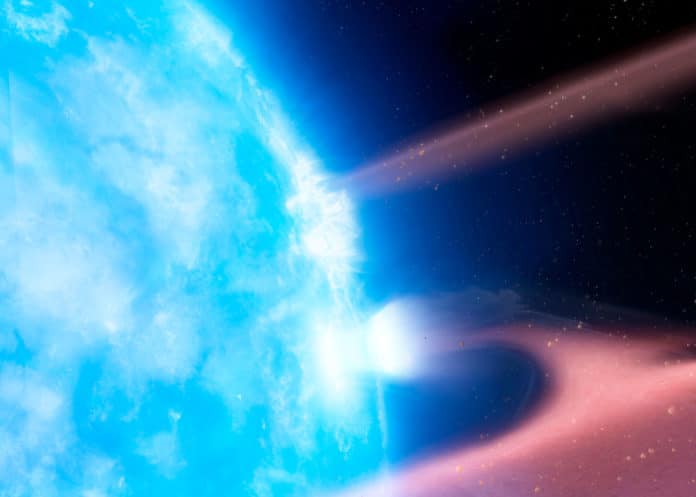Using x-rays, astronomers at the University of Warwick observed the debris from destroyed planets impacts the white dwarf surface. The study also offers the first direct measurement of the accretion of rocky material onto a white dwarf. The observed event occurred billions of years after the formation of the planetary system.
The fate awaits many stars: to become a white dwarf. Most of the white dwarfs in our galaxy are considered to be accreting the debris from planets and other objects that once orbited them.
For decades, astronomers have been using spectroscopy at optical and ultraviolet wavelengths to measure the abundance of elements on the star’s surface and work out from that the composition of the object it came from. But, they have indirect evidence that these objects are actively accreting. Spectroscopic observations also show that 25–50% of white dwarfs with heavy iron, calcium, and magnesium pollute their atmospheres.
Astronomers had not directly seen the material as it was pulled into the star.
Dr. Tim Cunningham of the University of Warwick Department of Physics said: “We have finally seen material entering the star’s atmosphere. It is the first time we’ve derived an accretion rate that doesn’t depend on detailed models of the white dwarf atmosphere. What’s quite remarkable is that it agrees extremely well with what’s been done before.”
“Previously, measurements of accretion rates have used spectroscopy and have been dependent on white dwarf models. These are numerical models that calculate how quickly an element sinks out of the atmosphere into the star and tell you how much is falling into the atmosphere as an accretion rate. You can then work backward and work out how much of an element was in the parent body, whether a planet, moon, or asteroid.”
White dwarf potentially destroys or unsettle orbital bodies in the process. The star absorbs the material from those bodies. This process occurs at a high enough rate it slams into the star’s surface, forming a shock-heated plasma that then settles on the surface.
Chandra’s improved angular resolution helped astronomers separate the target star from other X-ray sources. Through this, they viewed, for the first time, X-rays from an isolated white dwarf. Their observation confirms decades of words of material accreting into white dwarfs.
Dr. Cunningham adds: “What’s exciting about this result is that we’re working at a different wavelength, X-rays, and that allows us to probe a completely different type of physics.”
“This detection provides the first direct evidence that white dwarfs are currently accreting the remnants of old planetary systems. Probing accretion in this way provides a new technique by which we can study these systems, offering a glimpse into the likely fate of the thousands of known exoplanetary systems, including our Solar system.”
Journal Reference:
- Tim Cunningham, A white dwarf accreting planetary material from X-ray observations, Nature (2022). DOI: 10.1038/s41586-021-04300-w
